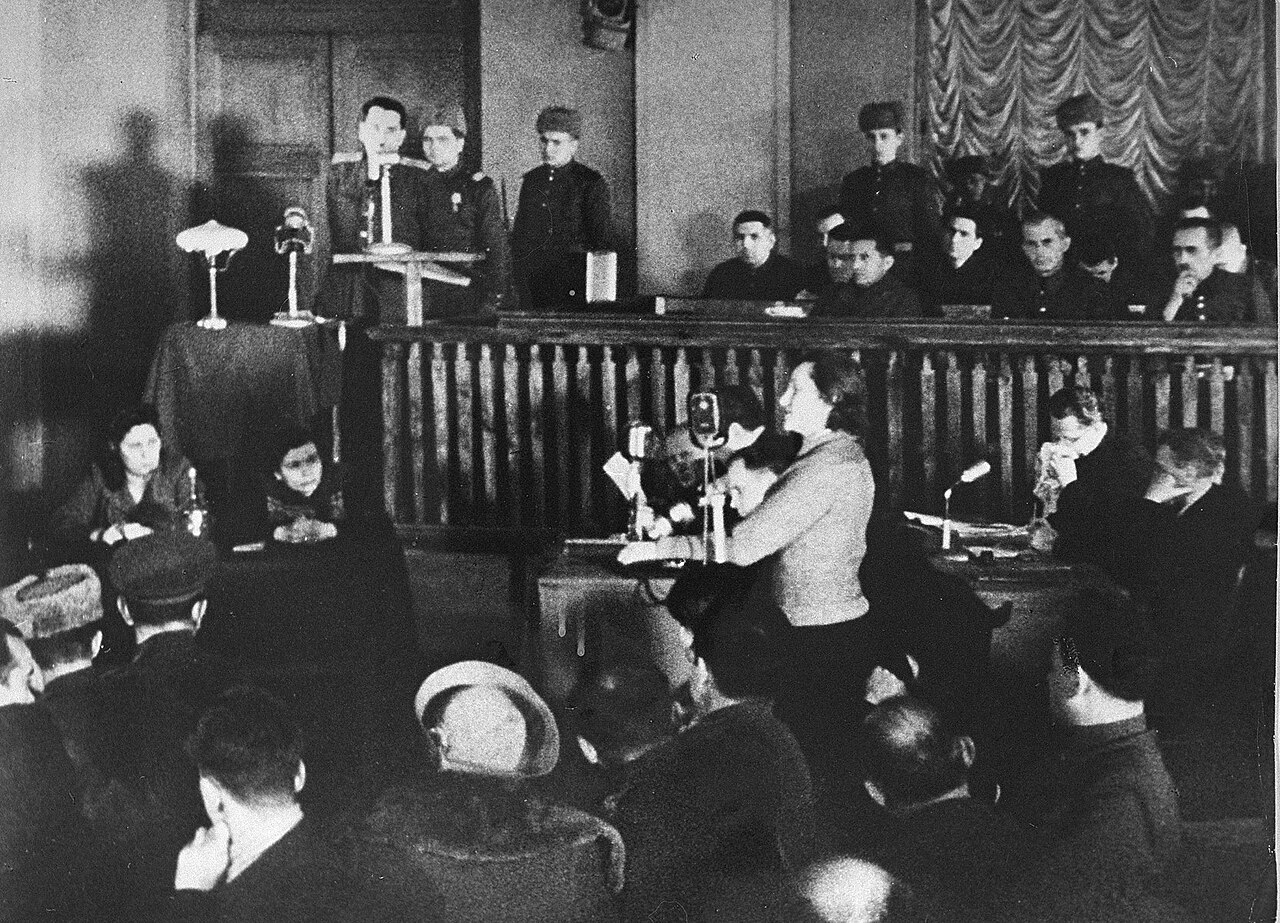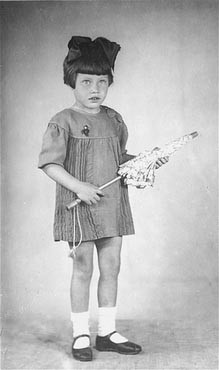″From all the streets and alleys, people were coming in streams. Then we all flowed into one central street, a river of people that ended up at this Babi Yar,″
-Raisa Dashkevich in an interview with Associated Press, 1991.
Eighty years ago today, shortly after German forces had entered Kiev and two major explosions had destroyed German headquarters in the city, a massacre occurred that would herald the destruction yet to come: the murder of Jews in Kiev. At the time of invasion, an estimated 60,000 Jews remained in Kiev, the capital of the Soviet Ukraine (and today the capital of independent Ukraine).
While up to 100,000 fled Kiev before the Germans entered, those left behind were mostly women, children, the ailing and the elderly. They were subjected to unspeakable horrors as German police units and members of Einsatzgruppe C murdered them. Rounded up, most were taken to Babi Yar, a ravine northwest of the city, and shot to death as they entered the area. German reports later totaled the murdered at 33,771 people, making it the third largest mass killing at an individual location during World War II. In the months following, thousands more were murdered – including non-Jews such as Roma, Communist officials, prisoners of war, and civilians – bringing the total murdered and buried at Babi Yar to nearly 100,000 people. Only 29 people are known to have survived the massacre.
Among those murdered were young girls and women. They include Raisa Maistrenko, who was three years old when her family was marched to Babi Yar. One of the last living survivors, Raisa lost eighteen relatives in the massacre. Her father was serving in the Soviet army at the time, so the family followed their patriarch – grandfather Meer – who decided to follow the Nazi orders to Babi Yar, thinking it was intended as an evacuation.
“Leaflets were posted saying that all the Jews had to gather in one place,” recalled Maistrenko, who was just 3 at the time. “But we didn’t think it was to execute us. We thought they would transport us to Palestine.”
Raisa in an interview with the SunSentinel, 2020.
As the family approached Babi Yar, Raisa recounted how they could hear the noise and horrible screams of the massacre. Yet they continued, with Raisa’s grandmother carrying her. Raisa and her grandmother were separated from the family, beaten with batons into the ravine. Her grandmother attempted to escape, running until they reached a nearby cemetery and hid among the graves. The pair eventually returned home under cover of darkness. They had survived.

Dina (Vera) Mironovna Pronicheva was 30 years old, married, and a mother of two young children when she survived the massacre. A grown woman, her testimony is integral to understanding what unfolded at Babi Yar. In her written testimony, Dina stated,
Hitler’s troops occupied Kiev on September 19, 1941 and from the very first day started to rob and kill Jews.… We were living in terror. When I saw the posters on the city’s streets and read the order: “All the Jews of Kiev must gather at Babi Yar,” about which we had no idea, in my heart I sensed trouble. A tremor shook my entire body. I understood that nothing good was awaiting us at Babi Yar. So I dressed my little ones, the younger one [the girl] who was 3 years old and the older one [the boy] – 5, packed their belongings into a small sack, and took my daughter and son to my Russian mother-in-law. Afterwards, I took my sick mother and, following the order, she and I started out on the way to Babi Yar.
Hundreds, no thousands, of Jews were walking the same way. An old Jew with a long white beard walked next to me. He wore a talis [prayer shawl] and tefillin [phylacteries]. He was murmuring quietly. He prayed the same way as my father did when I was a child. Ahead of me a woman with two children in her arms walked along, while the third child clung to her apron-strings. The sick women and elderly people were taken by carts, on which bags and suitcases were piled up. Small children were crying. The older people who had difficulty walking were sighing in a barely audible way, but they silently continued their path of sorrow….
Russian husbands accompanied their Jewish wives.
Russian wives accompanied their Jewish husbands.
When we neared Babi Yar, shooting and inhuman cries could be heard. I started to grasp what was going on, but said nothing to my mother.
[…]
Each time I saw a new group of men and women, elderly people, and children being forced to take off their clothes. All [of them] were being taken to an open pit where submachine-gunners shot them. Then another group was brought….
With my own eyes I saw this horror. Although I was not standing close to the pit, terrible cries of panic-stricken people and quiet children’s voices calling “Mother, mother…” reached me.
I saw all this, but in no way could I understand how people were killing other human beings only because they were Jews. And then I understood that Fascists are not human beings, but beasts…. …I saw a young woman, completely naked, nursing her naked baby when a policeman came running up to her, tore the baby from her breast, and threw it into the pit alive. The mother rushed there after her baby. The fascist shot her and she fell down dead…
The policeman ordered me to strip and pushed me to a precipice, where another group of people was awaiting their fate. But before the shots resounded, apparently out of fear, I fell into the pit. I fell on the [bodies] of those already murdered…. During the first moments I couldn’t grasp anything – either where I was or how I got there.
I thought that I had gone mad, but when people started to fall on top of me, I regained consciousness and understood everything. I started to feel my arms, legs, stomach, [and] head to make certain that I had not even been wounded.
I pretended to be dead. Those who had been killed or wounded were lying under me and on top of me – many were still breathing, others were moaning…. Suddenly I heard a child weeping and the cry: “Mummy!” I imagined my little girl crying and I started to cry myself.
The shooting was continuing and people kept falling. I threw bodies off of me, afraid of being buried alive. I did so in a way that would not attract the attention of the policemen.
Suddenly all became quiet. It was getting dark. Germans armed with submachine-guns walked around, finishing off the wounded. I felt that somebody was standing above me, but I did not give any sign that I was alive, even though that was very difficult. Then I felt we were being covered with earth. I closed my eyes so that the soil would not get into them, and when it became dark and silent, literally the silence of death, I opened my eyes and threw the sand off me, making sure that no one was close by, no one was around, no one was watching me. I saw the pit with thousands of dead bodies. I was overcome by terror. In some places the earth was heaving – people half-alive were [still] breathing.
I looked at myself and was terror stricken – the undershirt covering my naked body was soaked with blood. I tried to stand up but was unable to do so. Then I said to myself: “Dina, stand up. Get away. Run from here, your children are waiting for you.” So I stood up and ran, but then I heard a shot and understood that I had been seen. I fell to the ground and remained silent. It was quiet. Still on the ground, I started to move quietly toward the high hill[s] surrounding the pit. Suddenly I felt that something was moving behind me. At first I was afraid and decided to wait for a minute. I turned around quietly and asked: “Who are you?”
I was answered by a thin, scared child’s voice: “Auntie, don’t be afraid, it’s me. My name is Fima. My last name is Shnaiderman. I am 11 years old. Take me with you. I am very afraid of the dark.
I moved closer to the boy, hugged him tightly, and started to weep silently. The boy said:
“Don’t cry, Auntie.”
We both started to move silently. We reached the edge of the precipice, rested a little, and then continued to climb further, helping each other. We had reached the top of the pit and were standing, about to proceed in the direction we thought best, when a shot rang out. By instinct we both fell to the ground. We kept silent for several minutes, afraid to utter a single word. When I calmed down, I moved close to Fimochka, took shelter at his side, and asked him quietly: “How do you feel, Fimochka?”
There was no answer. In the darkness I felt his arms and legs. He was not moving. There was no sign of life. I rose a bit and looked into his face. He was lying with closed eyes. I tried to open them until I realized that the boy was dead. Apparently the shot that was heard a moment earlier took his life.
I caressed the boy’s cold face, bidding him farewell, then I stood up and started to run.
Only after making sure I was far away from that terrible place called Babi Yar did I allow myself to walk upright, to a hut that could barely be made out in the darkness…

What more is there to say? How do you respond to accounts of those by Raisa and Dina? Today, eighty years later, words elude us.
-Tiffany Isselhardt
Program Developer
Girl Museum INc.
